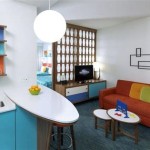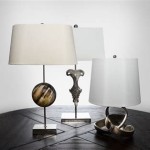Commercial Interiors Design: Creating Spaces that Work
Commercial interiors design encompasses the planning, conceptualization, and execution of interior spaces for businesses, organizations, and public venues. It goes beyond mere aesthetics, aiming to create environments that are functional, inspiring, and conducive to achieving the specific goals of each client. This multifaceted field involves a deep understanding of space planning, ergonomics, lighting, materials, and the psychology of design, all integrated to enhance user experience, productivity, and brand identity.
Key Considerations in Commercial Interiors Design
Commercial interiors design is a collaborative process that involves extensive research, planning, and communication with the client. The design team works closely with stakeholders to understand their specific needs, vision, and goals for the space. This includes aspects such as the intended use of the space, target audience, brand identity, budget constraints, and any regulatory requirements. The process also involves a thorough assessment of the existing building structure, including its layout, dimensions, and any technical limitations.
Creating Functional and Effective Spaces
Functionality is a paramount concern in commercial interiors design. The design must effectively support the intended use of the space while optimizing workflow, accessibility, and safety. This involves careful consideration of space planning, furniture selection, and the placement of essential components like lighting, electrical outlets, and technology infrastructure. Ergonomics plays a crucial role in ensuring user comfort and productivity, particularly in workplaces. The design team must select furniture and fixtures that are appropriate for the tasks performed in the space, taking into account factors like posture, reach, and movement.
Enhancing Brand Identity and User Experience
Commercial interiors design serves as a powerful tool for communicating a brand's identity and values. The design elements chosen, including color palettes, materials, finishes, and furniture, should reflect the brand's personality and messaging. For example, a technology company might opt for a modern, minimalist design with clean lines and bright colors, whereas a luxury retail store could utilize opulent materials like marble and leather to convey a sense of sophistication.
The design should also consider the user experience, creating a welcoming and comfortable atmosphere that encourages engagement and interaction. This may involve creating distinct zones for various activities, providing comfortable seating areas, and incorporating elements like natural light, greenery, and artwork. The design team must consider the specific needs and preferences of the target audience, ensuring the space is inclusive and accessible to all.
The Importance of Collaboration in Commercial Interiors Design
Successful commercial interiors design relies heavily on collaboration between the design team, the client, and various specialists. Architects, engineers, contractors, and other professionals contribute their expertise to ensure the project's success. Open communication, clear expectations, and a shared vision are essential for navigating the complexities of the design process. The design team should actively seek feedback from the client throughout the process, making adjustments and refinements as needed to ensure the final design meets their needs and expectations.
Trends in Commercial Interiors Design
Commercial interiors design is a dynamic field that is constantly evolving in response to technological advancements, shifting social trends, and changing workplace dynamics. Some current trends in commercial interiors design include:
-
Biophilic Design:
Incorporating elements of nature into the design to create a more calming and stimulating environment. -
Sustainable Design:
Using eco-friendly materials and practices to minimize environmental impact. -
Flexible and Agile Workspaces:
Designing spaces that are adaptable to changing needs and accommodate remote work and collaborative work styles. -
Technology Integration:
Incorporating technology seamlessly into the design to enhance functionality and user experience.
The commercial interiors design field is constantly evolving, and staying up-to-date on emerging trends and best practices is crucial for designers to create spaces that are not only functional and aesthetically pleasing but also meet the evolving needs of their clients.

7 Elements Of Commercial Interior Design Ofs Designers

Why Interior Design For Your Commercial Property Is Worth The Investment Nativa Interiors

20 Top Commercial Interior Design Firms To Watch In 2024 Decorilla

Commercial Interior Design For Project Types Hatch

Industrial Chic Commercial Interior Design A Designer At Heart Consultant Specialised In Serviced Accommodation

Best Commercial Interior Design Provider In

Commercial Interior Design Luxuryworldinteriors Com

Commercial Interior Design Services Planforce Group

Commercial Interior Designers In Mumbai Delecon Design

Commercial Interior Design Office Company Centaurus Designs








